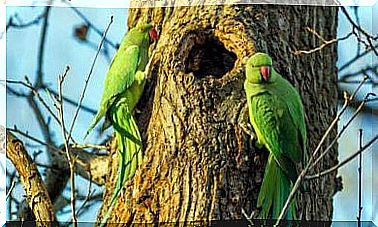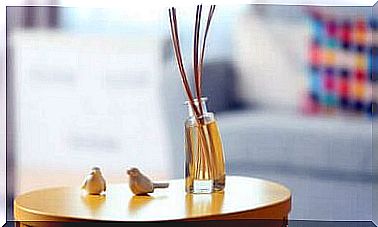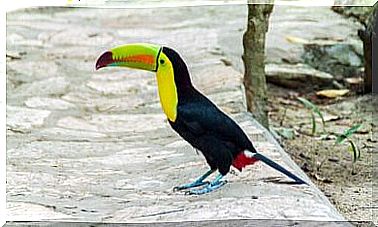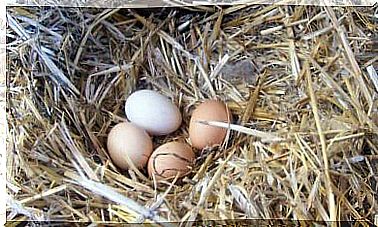Golden Drop Frog: Habitat And Characteristics
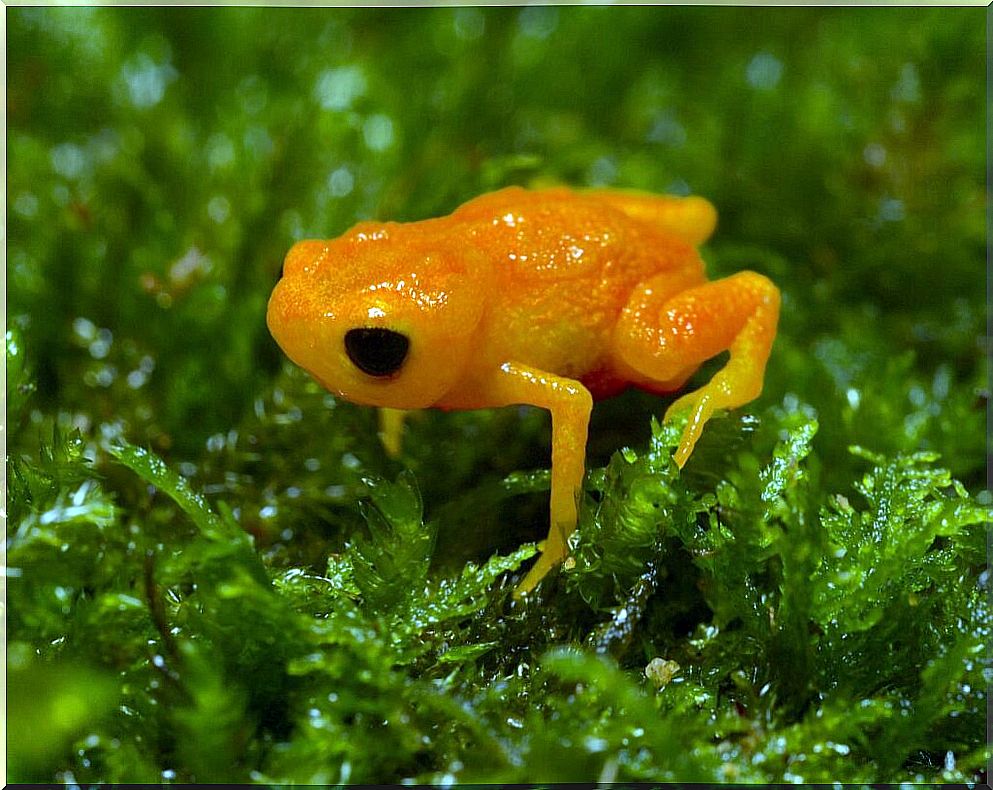
Small, yellow and toxic. The golden drop frog is an amphibian with a showy color, which inhabits the Atlantic forests, which is distinguished by its yellow color, almost identical to that of a pumpkin. For this reason in English it is also known by the name of “pumpkin toad” or “pumpkin toad”.
Strange as it may seem, there is not just one type of golden drop frog, but 36 other species have been described, as indicated by studies in the science portal PLOS ONE. All are found under the same genus ( Brachycephalus ) and the differences focus on the biogeography of the species and its natural history.
That is why, on this occasion, we will focus specifically on the Brachycephalus ephippium species. Read on to learn about this beautiful frog and its most amazing features.
Habitat of the golden drop frog
This particular amphibian lives among bushes, plants and trees, within the forests of the Atlantic. Specifically, it lives in eastern Brazil, where its domains extend to nearly 1,700 kilometers. Its population is usually small, but it manages to occupy areas up to 100 hectares. It can live at altitudes ranging from 200 to 1900 meters above sea level.
It is a microendemic species , so it can only be found in mountainous and jungle environments. For this reason, the populations are trapped on mountainous ‘islands’ which contain all the conditions for their survival, but which are surrounded by inhospitable valleys.
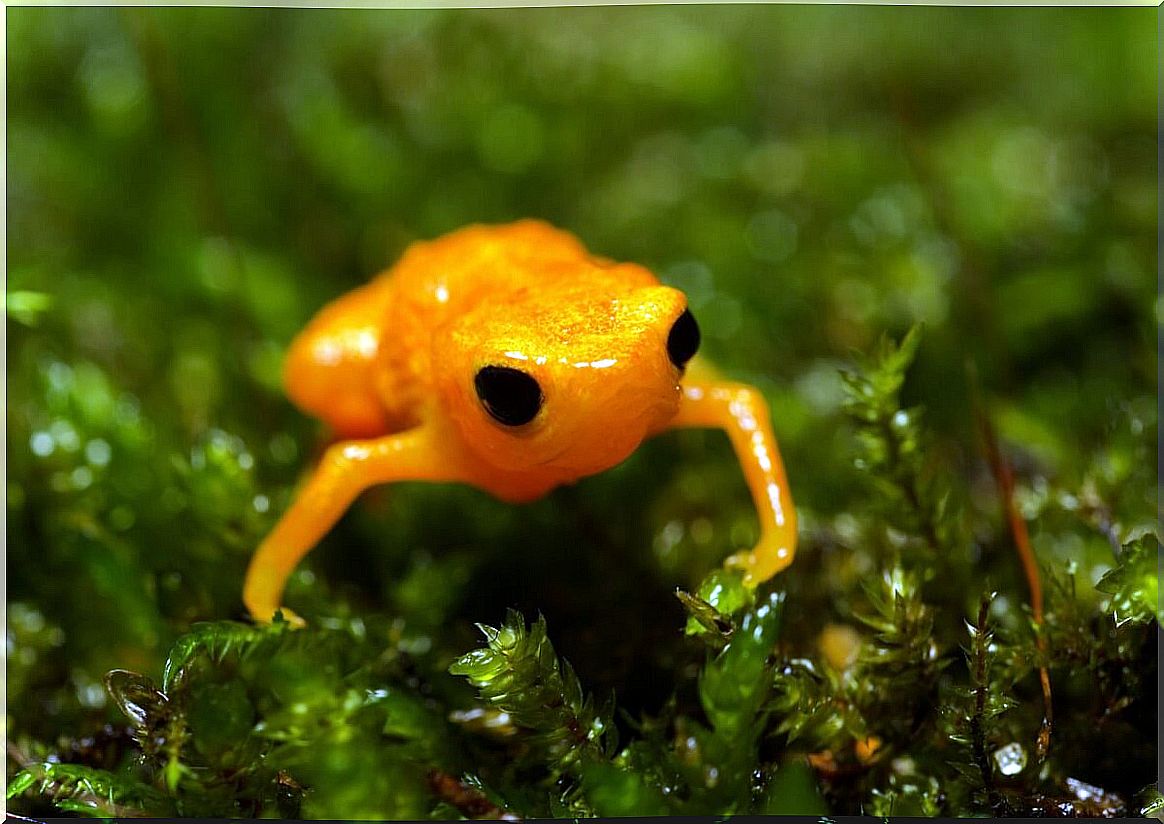
Physical characteristics
These tiny amphibians are about 2 centimeters long and their snouts are just 18 millimeters long. Brachycephalus ephippium also exhibits hyperoxification, which refers to the dermal ornament. This phenomenon provides it with a dorsal shield, something like a “breastplate” in the back region.
In general, this yellow-orange frog has opted for miniaturization. As a result, he lost the phalanges of his hands and some toes are not functioning. Likewise, since its head is wider than it is long, its eyes protrude a little.
Nor can we forget the Brachycephalus rotenbergae species , which has the particularity of shining under ultraviolet light. This phenomenon appears to be related to their breeding season, although there are still no conclusions on the usefulness of this mechanism.
Is the golden drop frog poisonous?
The golden drop frog follows the basic rule of color and poison. It has a vibrant yellow hue to warn predators of its toxicity, in other words it has an aposematic color. Its venom is called tetrodotoxin , which is a powerful neurotoxin capable of causing cardiac arrest in vertebrates.
Feeding and reproduction
This frog is a diurnal organism that consumes a wide variety of prey, mainly arthropods. It has a predilection for mites and springtails, although it also feeds on some spiders. The preferences of amphibians appear to be related to its size and habitat, as these microinvertebrates are the most abundant groups in the litter.
On the other hand, it should be noted that the breeding season is similar to that of other amphibians. It prefers the rainy seasons to mate and the males actively maintain their territory, through vocalizations. In this way, they protect their foraging area, their resources and their eggs.
Frogs mate with rain so that their eggs do not dry out, as they are species with external fertilization. Once the female accepts the male, she lays her eggs and the male fertilizes them with his sperm. For this they must perform the amplexus , a term that describes when the males embrace the female, to ensure that the eggs are fertilized immediately when they hatch.
The female lays her eggs in about 30 minutes, which are just 5.3 millimeters in diameter. Once fertilized, the mother covers her lying on the ground, to hide and protect them. This also prevents the eggs from drying out, as they will take up to 64 days to hatch.
Conservation status of the golden drop frog
Fortunately, this strange amphibian is not in danger of extinction. According to the International Union for Conservation of Nature (IUCN) Red List , this is a species of least concern. However, this does not mean that it is free from any danger, as information about this species is still minimal.
One of the reasons we need to be careful with this species is its microendemic status. As inhabitants of very specific natural regions, the loss of their habitat can be catastrophic. This lack of niche could cause its extinction in a very short period of time.
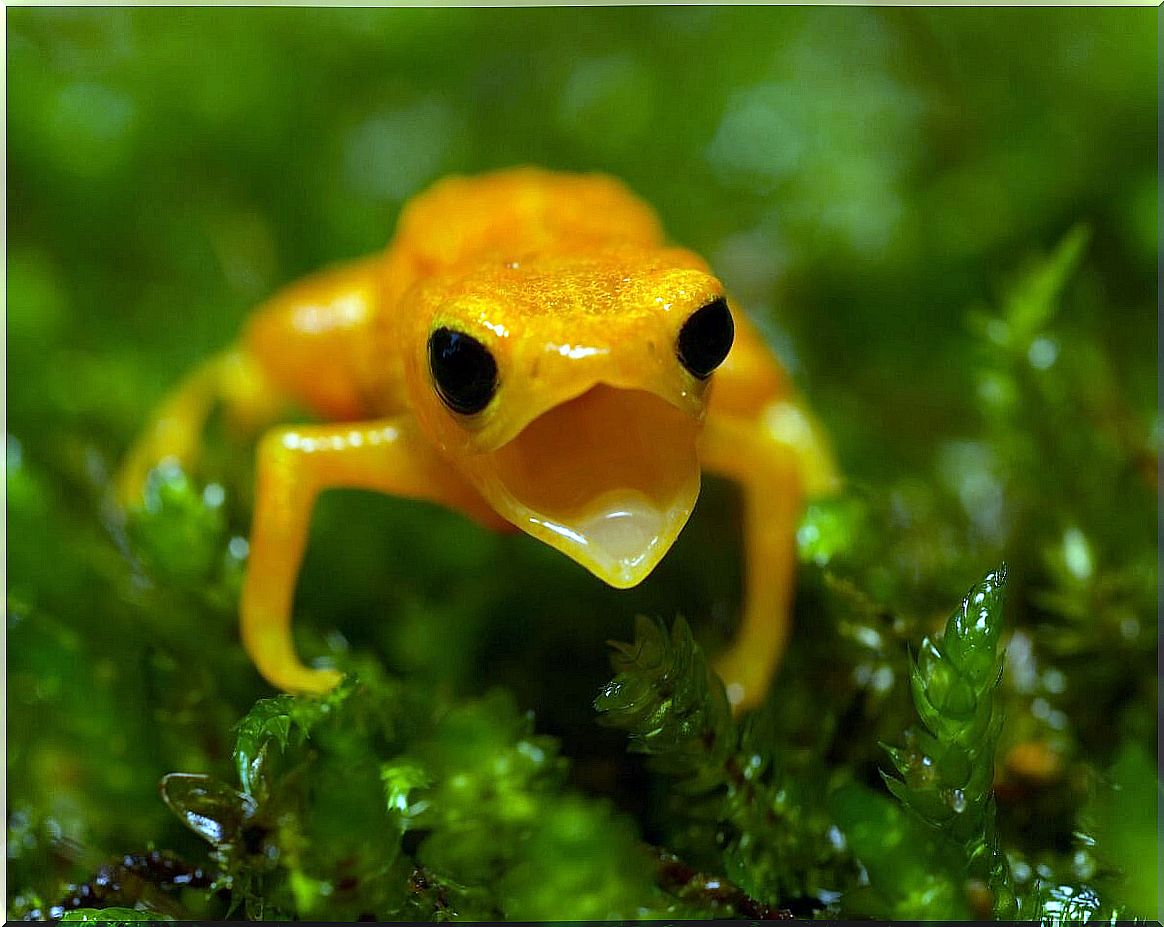
Remember that colors may warn you of impending danger, never underestimate them. While this rule isn’t always met, it doesn’t hurt to take it into account. Likewise, don’t handle any species you don’t know and unless it has such colorful colors.




